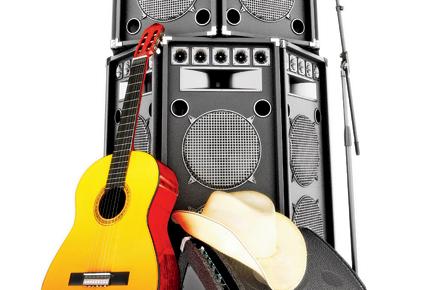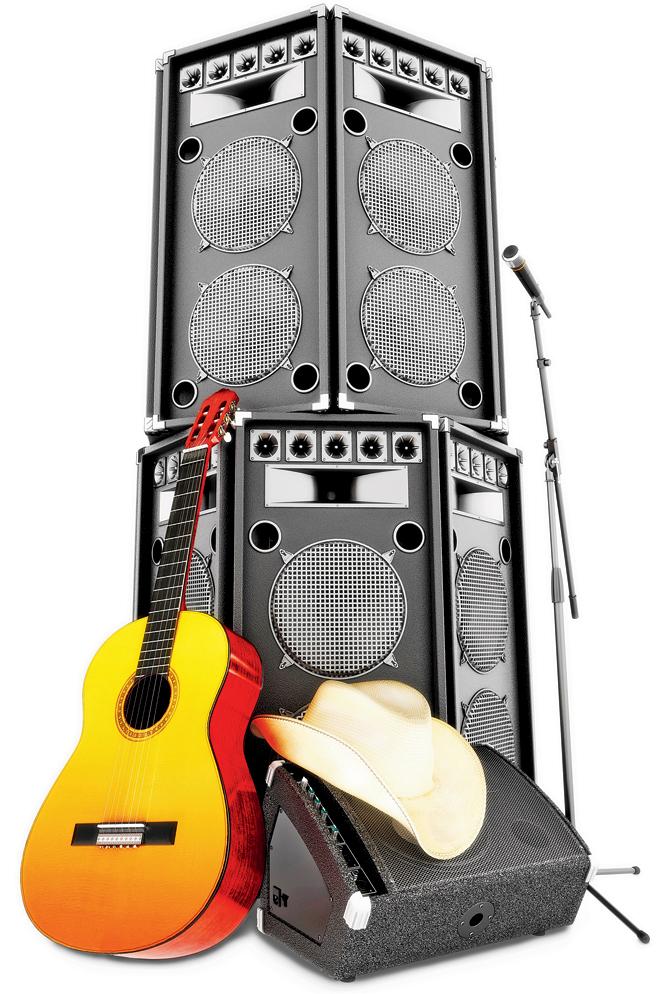As the Palm Expo opens today, here's a checklist to help find the right professional audio gear

![]() Whether you are a budding musician, recording engineer, filmmaker or a hobbyist keen to max your audio set-up, picking the right gear is crucial. And what better time to take a crash course than when the Palm Expo is in town. Touted as India’s largest professional audio gear and lighting expo, the event will have Indian and international audio brands and custom gear makers showcasing their best line-up of products. Prashant Govindan, audiophile and senior director Professional Division at HARMAN India shares tips to pick the right audio gear.
Whether you are a budding musician, recording engineer, filmmaker or a hobbyist keen to max your audio set-up, picking the right gear is crucial. And what better time to take a crash course than when the Palm Expo is in town. Touted as India’s largest professional audio gear and lighting expo, the event will have Indian and international audio brands and custom gear makers showcasing their best line-up of products. Prashant Govindan, audiophile and senior director Professional Division at HARMAN India shares tips to pick the right audio gear.

ADVERTISEMENT
Loudspeakers
“The best way to pick the right speakers is to audition them yourself. Play your favourite track and listen. If it sounds good to your ears, it’s will sound good to others too,” says Govindan.
Ideal power for speakers: Numerous parameters measure the power of speakers such as RMS (Root Mean Square), the ambiguous Peak Power and the often misused PMPO (Peak Music Power Output). However, most modern sound designers rely on Sound Pressure Level (SPL), also referred to as sensitivity, measured in decibel (dB), which tells the total and loudest sound that a speaker can play. “For outdoor usage, you need speakers with higher SPL, whereas for indoors, you need speakers with lower SPL because there are more reflective surfaces,” he says.
Correct frequency: However, one loudspeaker can’t play all frequencies, and therefore, the most advance speaker systems have either a two-way (two speakers) or a three-way (three speakers) set-up. “Usually, a two-way set-up is sufficient, but a three-way adds to the effect. However, anything more than that is a waste of resources,” he says, adding that over half of speaker systems in the world have a two-way set-up.
Headphones
“The most important factor while buying headphones is comfort. If it suits you, it’s perfect,” says Govindan. There are three types of head phones: in-ear (it goes inside your ears), on-ear (that sits on your ears), and over the ear (it completely covers your ears). In-ear headphones help keep the ambient noise out and are great for use in loud environments. The on-ear are the most common, commercial headphones, but not recommended for professional set-ups (especially in studios), since sound can spill out into nearby mics. Over-ear headphones are available in two forms: open back (where sound spills out) and close back (with no sound spillage). “The over-ear headphones are most complicated to build. The close back are best-suited for professional studios as they block ambient noise as well as prevent sound from your headphones to spill out,” shares Govindan. As with loudspeakers, SPL can be used to measure the sensitivity level of headphones. Users should also check the frequency (measured in Hz) range of headphones before purchasing. Again, the real test, however, is playing your favourite music and listening to it.
Microphones
A good audio gear is incomplete without a set of mics, and knowing which are ideal for your audio needs will not only give you better performance but also save money. There are three types of mics: dynamic (which have a revolving magnet inside and are rugged to use), condensor (uses a capacitator, are more efficient and sensitive to sound, but very
delicate to use) and piezoelectric (lightweight, most commonly used to make wearable mics). Govindan says the right choice depends on the application (whether it’s for vocals, instruments or during a speech), technology, and finally, usage.
“A dynamic mic is suited for outdoor events where the risk of accidental falls is also high. A condensor mic, on the other hand, is ideal for sensitive recordings where you want to pick every sound (mostly studios), whereas a piezoelectric one is suited in consumer electronics as they are cheaper to manufacture. Piezoelectric mics are also used to make wearable mics, which are recommended for stage perfrrmances as they are light and can be easily hidden,” he informs.
The other factors to consider while picking up mics is the frequency range and orientation (omni-directional mics record sound from all directions, whereas cardioid or uni-directional mics are designed to record sound approaching from only one direction). “But eventually, you should rely upon what works for you,” he concludes.
 Subscribe today by clicking the link and stay updated with the latest news!" Click here!
Subscribe today by clicking the link and stay updated with the latest news!" Click here!







